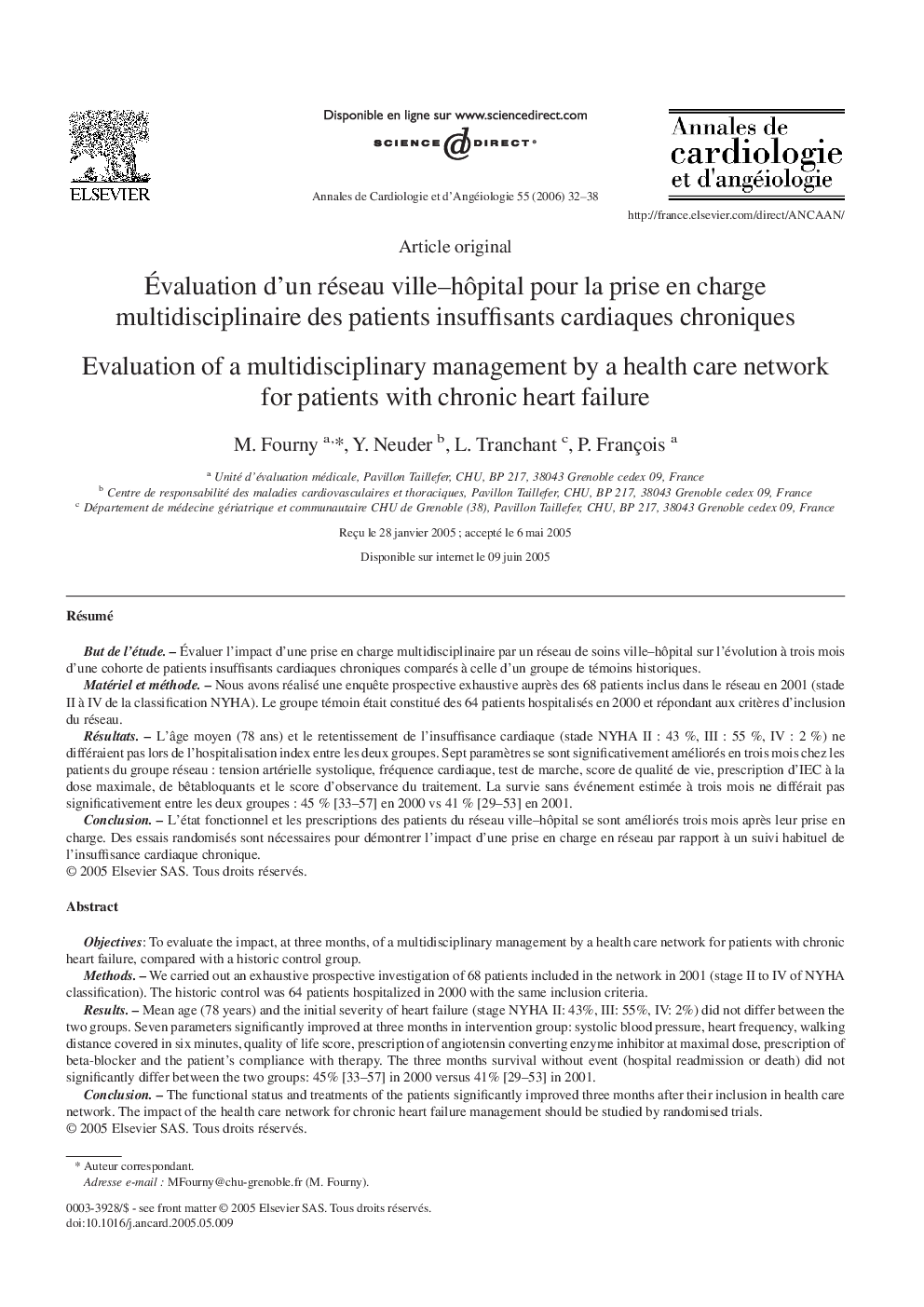| Article ID | Journal | Published Year | Pages | File Type |
|---|---|---|---|---|
| 2869466 | Annales de Cardiologie et d'Angéiologie | 2006 | 7 Pages |
RésuméBut de l'étude. – Évaluer l'impact d'une prise en charge multidisciplinaire par un réseau de soins ville–hôpital sur l'évolution à trois mois d'une cohorte de patients insuffisants cardiaques chroniques comparés à celle d'un groupe de témoins historiques.Matériel et méthode. – Nous avons réalisé une enquête prospective exhaustive auprès des 68 patients inclus dans le réseau en 2001 (stade II à IV de la classification NYHA). Le groupe témoin était constitué des 64 patients hospitalisés en 2000 et répondant aux critères d'inclusion du réseau.Résultats. – L'âge moyen (78 ans) et le retentissement de l'insuffisance cardiaque (stade NYHA II : 43 %, III : 55 %, IV : 2 %) ne différaient pas lors de l'hospitalisation index entre les deux groupes. Sept paramètres se sont significativement améliorés en trois mois chez les patients du groupe réseau : tension artérielle systolique, fréquence cardiaque, test de marche, score de qualité de vie, prescription d'IEC à la dose maximale, de bêtabloquants et le score d'observance du traitement. La survie sans événement estimée à trois mois ne différait pas significativement entre les deux groupes : 45 % [33–57] en 2000 vs 41 % [29–53] en 2001.Conclusion. – L'état fonctionnel et les prescriptions des patients du réseau ville–hôpital se sont améliorés trois mois après leur prise en charge. Des essais randomisés sont nécessaires pour démontrer l'impact d'une prise en charge en réseau par rapport à un suivi habituel de l'insuffisance cardiaque chronique.
Objectives: To evaluate the impact, at three months, of a multidisciplinary management by a health care network for patients with chronic heart failure, compared with a historic control group.Methods. – We carried out an exhaustive prospective investigation of 68 patients included in the network in 2001 (stage II to IV of NYHA classification). The historic control was 64 patients hospitalized in 2000 with the same inclusion criteria.Results. – Mean age (78 years) and the initial severity of heart failure (stage NYHA II: 43%, III: 55%, IV: 2%) did not differ between the two groups. Seven parameters significantly improved at three months in intervention group: systolic blood pressure, heart frequency, walking distance covered in six minutes, quality of life score, prescription of angiotensin converting enzyme inhibitor at maximal dose, prescription of beta-blocker and the patient's compliance with therapy. The three months survival without event (hospital readmission or death) did not significantly differ between the two groups: 45% [33–57] in 2000 versus 41% [29–53] in 2001.Conclusion. – The functional status and treatments of the patients significantly improved three months after their inclusion in health care network. The impact of the health care network for chronic heart failure management should be studied by randomised trials.
